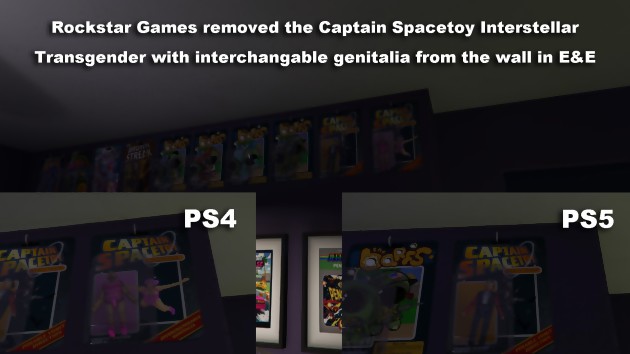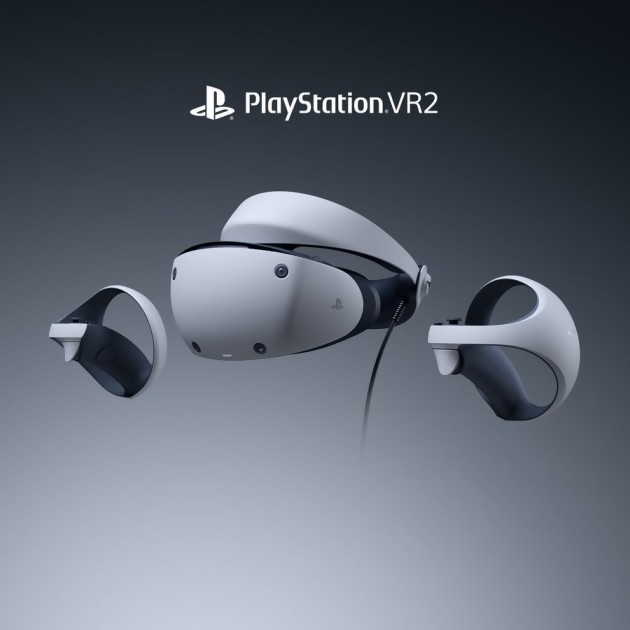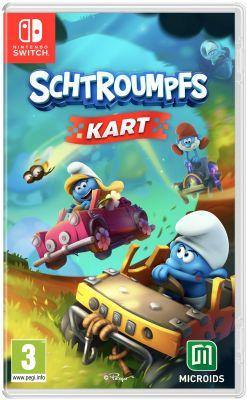 Released almost a decade ago on PS3, the very first The Last of Us immediately inherited the status of an absolute and unanimous masterpiece. It must be said that the game ticks all the boxes to appeal to the general public, despite a more adult and darker story, which has also allowed Naughty Dog to switch to another dimension, that of drama and violence. It was also through him that a certain Neil Druckmann managed to get out of the game, by becoming the key man in a company undergoing restructuring at that time. Christophe Balestra, then Bruce Straley, but also Amy Henning, we don't know if it was Druckmann who scared them away, but today he is the face of the new Naughty Dog, and the guarantor of a certain seal of California studio quality. The one who arrived in the Dogs by nerve and motivation is above all a great worker, and today he combines several hats: screenwriter, game designer, director, producer and since 2020, the co-presidency of Naughty Dog. He was able to convince an entire studio to trust him and impose a long-term vision. Since he is now busy working on their new IP (a fantastico-medieval game that leaked a year and a half ago), but also directed a few episodes of the TV series The Last of Us for HBO, he entrusted the direction of The Last of Us Part 1 to two trusted people: Matthew Gallant, who serves as game director, and Shaun Escayg, who is none other than the creative director on this remake / remaster. The former (Matthew Gallant) was lead system designer on The Last of Us 2 and co-led the creation of over 60 accessibility features, while Shaun Shaun Escayg started as lead cinematic animator on the former The Last of Us and Uncharted 4, before becoming creative director on Uncharted: The Lost Legacy. Admittedly, he made an infidelity to Naughty Dog by going to Eidos Montreal to work on Marvel's Avengers, but he quickly returned to the fold. Together, they worked on the redesign so that The Last of Us Part 1 would be in the same technological line as The Last of Us 2.
Released almost a decade ago on PS3, the very first The Last of Us immediately inherited the status of an absolute and unanimous masterpiece. It must be said that the game ticks all the boxes to appeal to the general public, despite a more adult and darker story, which has also allowed Naughty Dog to switch to another dimension, that of drama and violence. It was also through him that a certain Neil Druckmann managed to get out of the game, by becoming the key man in a company undergoing restructuring at that time. Christophe Balestra, then Bruce Straley, but also Amy Henning, we don't know if it was Druckmann who scared them away, but today he is the face of the new Naughty Dog, and the guarantor of a certain seal of California studio quality. The one who arrived in the Dogs by nerve and motivation is above all a great worker, and today he combines several hats: screenwriter, game designer, director, producer and since 2020, the co-presidency of Naughty Dog. He was able to convince an entire studio to trust him and impose a long-term vision. Since he is now busy working on their new IP (a fantastico-medieval game that leaked a year and a half ago), but also directed a few episodes of the TV series The Last of Us for HBO, he entrusted the direction of The Last of Us Part 1 to two trusted people: Matthew Gallant, who serves as game director, and Shaun Escayg, who is none other than the creative director on this remake / remaster. The former (Matthew Gallant) was lead system designer on The Last of Us 2 and co-led the creation of over 60 accessibility features, while Shaun Shaun Escayg started as lead cinematic animator on the former The Last of Us and Uncharted 4, before becoming creative director on Uncharted: The Lost Legacy. Admittedly, he made an infidelity to Naughty Dog by going to Eidos Montreal to work on Marvel's Avengers, but he quickly returned to the fold. Together, they worked on the redesign so that The Last of Us Part 1 would be in the same technological line as The Last of Us 2.
REMAKE OR REMASTER, THE DEBATE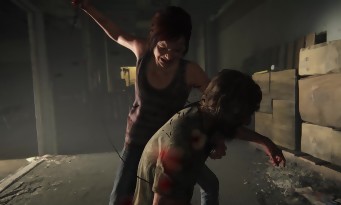 Inevitably, when we closely followed the evolution of the adventures of Joel and Ellie since their arrival in 2013 on PS3, then in its remastered PS4 version the following year in 2014, it is not easy to notice the differences. with this redesign in 2022. And yet, you have to be in bad faith not to notice the graphic developments that have been made to the game. Of course, you have to avoid going to watch compressed YouTube videos to get an idea, but promote the user experience at home, with a beautiful 4K screen under his eyes and the DualSense in his hands to judge definitively. "Rebuilt from the ground up", this is the term used by the teams at Naughty Dog in the promo campaign, which means that the game has indeed been retouched since its foundations. This can be seen in the character modeling, with reworked faces like Tess's appearing in almost different guises. 3D models have clearly gained in number of polygons, facial expressions are even more striking and more realistic, lip synchronization is now perfect, and the smallest detail is even more visible, especially if we have fun zooming with the Picture mode. The new animations, less visible however, make the movements more fluid and more realistic, even if Joel continues to go to bed with his backpack on his back. We were ticked on this awkward moment at the time, Naughty Dog has still not corrected it 10 years later. Shame.
Inevitably, when we closely followed the evolution of the adventures of Joel and Ellie since their arrival in 2013 on PS3, then in its remastered PS4 version the following year in 2014, it is not easy to notice the differences. with this redesign in 2022. And yet, you have to be in bad faith not to notice the graphic developments that have been made to the game. Of course, you have to avoid going to watch compressed YouTube videos to get an idea, but promote the user experience at home, with a beautiful 4K screen under his eyes and the DualSense in his hands to judge definitively. "Rebuilt from the ground up", this is the term used by the teams at Naughty Dog in the promo campaign, which means that the game has indeed been retouched since its foundations. This can be seen in the character modeling, with reworked faces like Tess's appearing in almost different guises. 3D models have clearly gained in number of polygons, facial expressions are even more striking and more realistic, lip synchronization is now perfect, and the smallest detail is even more visible, especially if we have fun zooming with the Picture mode. The new animations, less visible however, make the movements more fluid and more realistic, even if Joel continues to go to bed with his backpack on his back. We were ticked on this awkward moment at the time, Naughty Dog has still not corrected it 10 years later. Shame.
And yet, you have to be in bad faith not to notice the graphic developments that have been made to the game. Of course, you have to avoid watching compressed YouTube videos to get an idea, but to promote the user experience to home, with a beautiful 4K screen under his eyes and the DualSense in his hands to judge definitively.
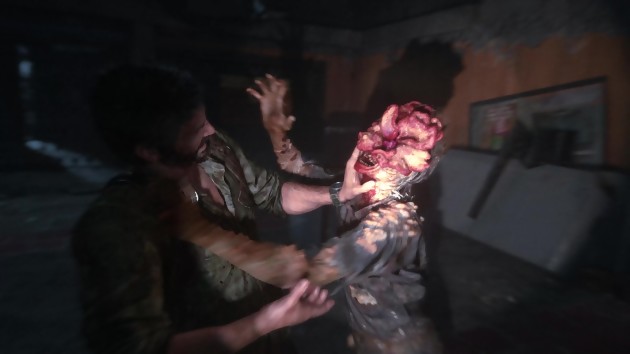
We quibble, because we must admit that using the Motion Matching technology used in The Last of Us 2 is a very nice idea, which makes the movements of the characters more fluid, more realistic and above all more convincing. Ok, there are still some unwelcome residues during certain passages, but the interaction with the surrounding scenery has gained in immersion. We recall that "Motion matching", which we have already seen at work on For Honor, is a technology that is able to mix several movements of an actor performing a movement in its database. Rather than using animation for each movement, the developers captured the movements of an actor moving in several different ways (forward, backward, swiveling, turning around) and it's the algorithm that takes care of selecting not one animation to play, but 3 or 4 that it executes together, ensuring that they mix together to obtain the perfect and most natural movement possible. It's smooth and it shows all the more on this The Last of Us Part 1.
FAITHFUL OR PERFORMING? But it is not only at the level of the characters that The Last of Us Part 1 has gained in intensity, in the environments as well, since they appear richer, more detailed and sometimes completely retouched. It is not uncommon indeed to come across rooms with new objects that have been added, thus reconfiguring our vision and pushing us to explore every corner to detect the slightest change. To this is added all the improvement made to the lighting which is capable of completely modifying the atmosphere of the game, or at least of a particular level. The shadows are better processed and above all more realistic, the lens flare is now visible against the light, the developers have been able to add more volumetric effects for explosions, mist or during passages infested with spores. This intensity, we feel it more than ever towards the end of the game, during the "Winter" Chapter where we see that the snow has been taken from The Last of Us 2, giving it a real consistency with each step taken. And of course, all this is reinforced by the use of Ray-Tracing which offers reflections, from the simple puddle of water, to moments in the rain, or even through simple mirrors in a quiet room. Of course, like almost all games on the PS5, the player has the choice between several game modes, Fidelity or Performance, just to enjoy either native 4K or 60 frames per second, but as usual never the of them. Very sincerely, we strongly recommend that you opt for dynamic 4K and 60fps, it's the best compromise and the illusion with native 4K is almost perfect. Moreover, a rather practical and pleasant option, it is possible to switch from “Loyalty” mode to “Performance” mode on the fly, without having to go through the title screen or reload a game.
But it is not only at the level of the characters that The Last of Us Part 1 has gained in intensity, in the environments as well, since they appear richer, more detailed and sometimes completely retouched. It is not uncommon indeed to come across rooms with new objects that have been added, thus reconfiguring our vision and pushing us to explore every corner to detect the slightest change. To this is added all the improvement made to the lighting which is capable of completely modifying the atmosphere of the game, or at least of a particular level. The shadows are better processed and above all more realistic, the lens flare is now visible against the light, the developers have been able to add more volumetric effects for explosions, mist or during passages infested with spores. This intensity, we feel it more than ever towards the end of the game, during the "Winter" Chapter where we see that the snow has been taken from The Last of Us 2, giving it a real consistency with each step taken. And of course, all this is reinforced by the use of Ray-Tracing which offers reflections, from the simple puddle of water, to moments in the rain, or even through simple mirrors in a quiet room. Of course, like almost all games on the PS5, the player has the choice between several game modes, Fidelity or Performance, just to enjoy either native 4K or 60 frames per second, but as usual never the of them. Very sincerely, we strongly recommend that you opt for dynamic 4K and 60fps, it's the best compromise and the illusion with native 4K is almost perfect. Moreover, a rather practical and pleasant option, it is possible to switch from “Loyalty” mode to “Performance” mode on the fly, without having to go through the title screen or reload a game.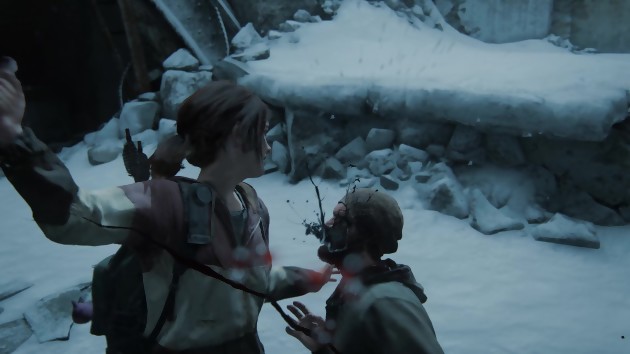
On the gameplay side, Naughty Dog clubbed that changes had also been made to make the game more modern and above all less fixed. To be completely honest with you, we didn't really feel any real differences, probably because it would have been complicated to take everything from The Last of Us 2 without hitting the very structure of the game, its spinal cord . Admittedly, some gunfights are more flexible than in 2013, but the game shows this rigidity which contrasts quite a bit with The Last of Us 2, which had introduced this dodging mechanic which made the game faster and more visceral. This is where we realize how much this sequel had made a leap forward in terms of gameplay, but also in terms of the behavior of opponents. Again, lots of promise, with behind-the-scenes development videos to show us how the enemy AI has been improved. Quite frankly, we are still far from what was achieved with The Last of Us 2 where the enemies communicated with each other; here, they often stay with basic patterns, when they don't go blind when we are hidden less than 50 cm from their gaiters. We would have liked a better result. We note, however, the arrival of workshops to improve your weapons, a mechanism taken from The Last of Us 2, and which will make players want to find them all this time.
On the gameplay side, Naughty Dog clubbed that changes had also been made to make the game more modern and above all less fixed. To be completely honest with you, we didn't really feel any real differences.

Naughty Dog has however caught up with this ton of accessibility features carried over from The Last of Us 2. No wonder when you know that Matthew Gallant is one of the authors. Visual, audio or motor accessibility presets, fully customizable alternate commands, camera help, auto-pickup, ability to shape UI by magnifying text size, colors, contrast, voice and audio synthesis and many more options in the subtitles, nothing and no one has been forgotten, which is quite pleasant and comfortable for a game coming out in 2022, you have to admit. Similarly, with the features offered with the DualSense (haptic feedback, adaptive trigger), immersion is more enhanced, especially with the use of the bow which is stretched before shooting an arrow. We also quite appreciated the 3D audio which allows you to hear the Clickers in the distance, or the sound effects of the suffering of the infested. However, one question remains: the price. Despite all these improvements, is the €80 claimed by Sony Interactive Entertainment on the PlayStation Store justified? So obviously, the game will be offered at 60 balls at standard Leclerc or Auchan Hypergames resellers, but the price recommended by its publisher remains that of the high price. A high price, far from what the competition has offered since the arrival of this 8th generation of consoles. Admittedly, the work done by Naughty Dog is worth much more than the usual €10 asked for upgrades offered on other titles, but clearly the fair price would have been between €30 and €40.




